So if you go to Budapest watch out for the killer escalators. They are faster than any others I've ever seen. My mom almost ate it a number of times getting on. They are so fast they get videos on YouTube. AND they have bike races on them!
Tuesday, October 16, 2007
Monday, October 15, 2007
Utah Nimby's Have a Good Thing
Some just don't get it. They could have the best situation in the world but they wouldn't know it. Transit in Utah has the story.
Sunday, October 14, 2007
Vienna's Ringstrasse
In addition to the ring system in Budapest, Vienna has the Ringstrasse. Interestingly enough, there isn’t a single line that completes the loop however many lines come into town and turn around next to the loop leaving the downtown walking city to be accessed only by the Metro system. There are several lines which use the Ringstrasse but all lines link to specific metro stations on the Ringstrasse with the Strassenbahn (Tram) filling in the accessibility gaps between Metro stations and regional rail. The central city is completely walkable, mostly cobbled and in some instances closed off to cars.

What is the history of this tram ring that allows the circulation of this signature street? Initially the ring was the city fortifications. However Franz Joseph, the King of the Austrio-Hungarian Empire decided that it wasn’t needed anymore and wanted to create a signature street. And create a meaningful place he did. The street is very wide and accommodates automobiles, streetcars, as well as a wide tree lined pedestrian and bike space.
The most interesting piece related to transit is not really the loop itself, although its an important part of both Vienna and Budapest transport, but rather the multimodal connections that are made at certain nodes along the Ringstrasse. At one node, there are four tram stops on the surface, a tram turnaround just beneath the surface and a connection to the M2 Metro which follows its own ring around half of the downtown. In the photos below you can kind of see how this works.


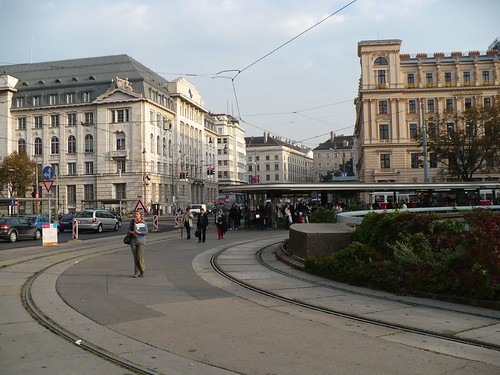
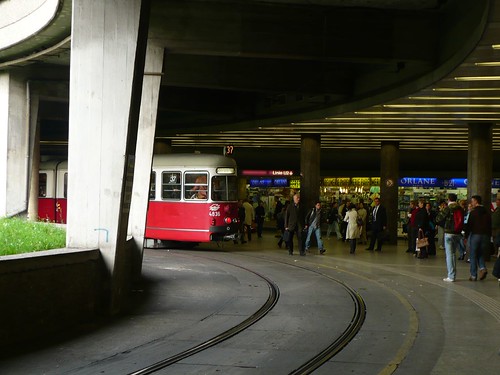
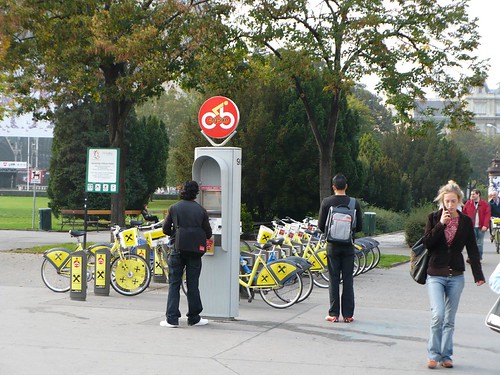
In another node, there are loops for trams, buses and the Metro connected by tunnels which allow citizens to not cross the Ringstrasse on the surface. Underneath the surface its like a mini-mall with eateries and the infamous Tabak shops where you can buy cigarettes and your metro pass.
So why do these systems work? Well first off they are the circulators for all modal connections with in the central city. Their operation is dependent on the interface of faster Metro lines and slower tram and bus connections (the photo below is a tram and bus stop). In Vienna specifically the buses sometimes are even using the tram right of way and stops of the trams. They also all connect to the intercity trains on the edges of town allowing anyone living in town to get around effortlessly without a car.
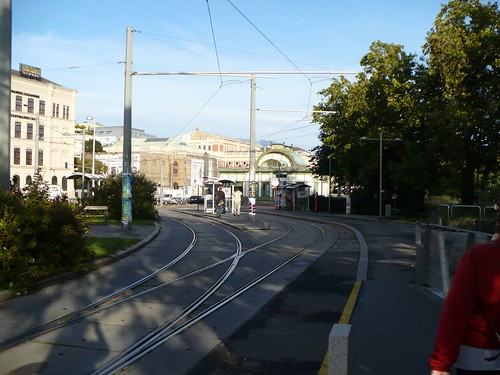
This means that its incredible affordable to live in the old parts of Vienna. I was told that inside the ring is expensive, but just outside of the ring you can get a nice flat for $600 per month. I will warn folks that there are lots of good restaurants there so food could get expensive.
And if you're worried about the environment, there are people there to remind you.
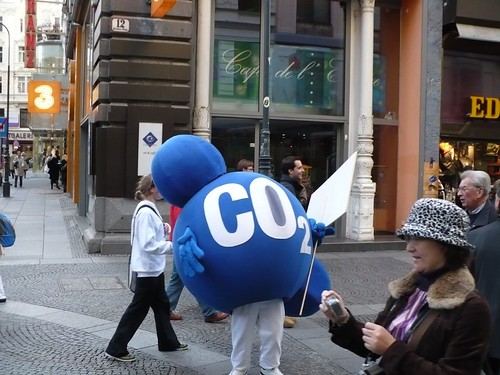

What is the history of this tram ring that allows the circulation of this signature street? Initially the ring was the city fortifications. However Franz Joseph, the King of the Austrio-Hungarian Empire decided that it wasn’t needed anymore and wanted to create a signature street. And create a meaningful place he did. The street is very wide and accommodates automobiles, streetcars, as well as a wide tree lined pedestrian and bike space.
The most interesting piece related to transit is not really the loop itself, although its an important part of both Vienna and Budapest transport, but rather the multimodal connections that are made at certain nodes along the Ringstrasse. At one node, there are four tram stops on the surface, a tram turnaround just beneath the surface and a connection to the M2 Metro which follows its own ring around half of the downtown. In the photos below you can kind of see how this works.





In another node, there are loops for trams, buses and the Metro connected by tunnels which allow citizens to not cross the Ringstrasse on the surface. Underneath the surface its like a mini-mall with eateries and the infamous Tabak shops where you can buy cigarettes and your metro pass.
So why do these systems work? Well first off they are the circulators for all modal connections with in the central city. Their operation is dependent on the interface of faster Metro lines and slower tram and bus connections (the photo below is a tram and bus stop). In Vienna specifically the buses sometimes are even using the tram right of way and stops of the trams. They also all connect to the intercity trains on the edges of town allowing anyone living in town to get around effortlessly without a car.

This means that its incredible affordable to live in the old parts of Vienna. I was told that inside the ring is expensive, but just outside of the ring you can get a nice flat for $600 per month. I will warn folks that there are lots of good restaurants there so food could get expensive.
And if you're worried about the environment, there are people there to remind you.

Labels:
Light Rail,
Streetcar,
Tram,
Vienna
Charlotte Sans Train
I went out on Friday and took some pictures along Charlotte's light rail line. In the neighborhoods along the line, there are many signs in windows displaying "Vote no" on the repeal of the transit tax.
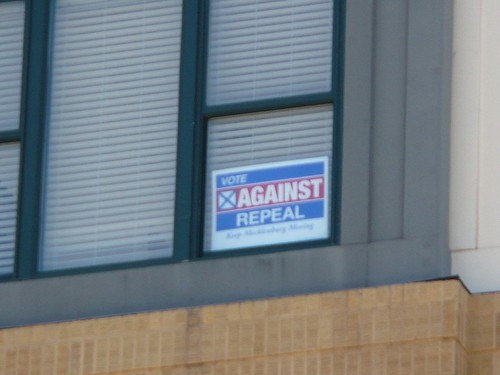


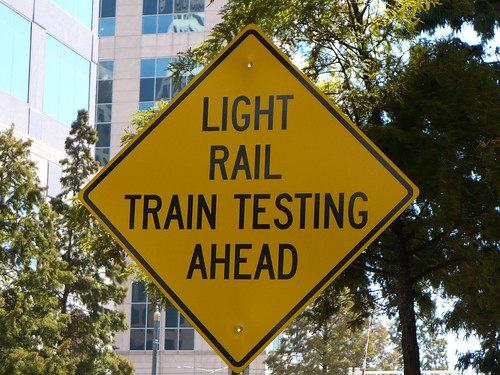
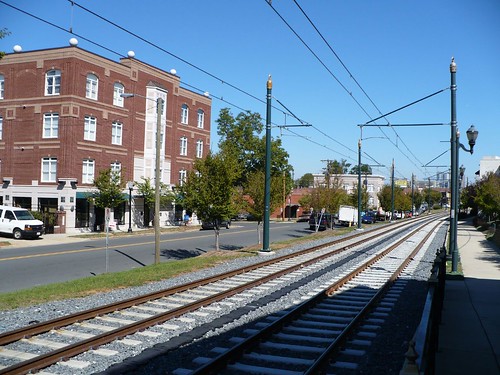
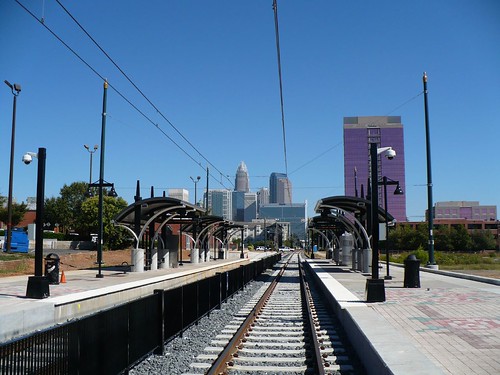
I was however annoyed with the waste of space for the electric substation, basically taking up a prime parcel of property close to the tracks for one use that could have been integrated into a larger development. They might be able to salvage it, but it seems unlikely that they will try. The substation is the brick box in the center of the property below(cut off a bit by blogger). Notice how the other development builds to the line.







I was however annoyed with the waste of space for the electric substation, basically taking up a prime parcel of property close to the tracks for one use that could have been integrated into a larger development. They might be able to salvage it, but it seems unlikely that they will try. The substation is the brick box in the center of the property below(cut off a bit by blogger). Notice how the other development builds to the line.

Wednesday, October 10, 2007
Flying Drone & Obama's Enviro Tone
I can't seem to stay put in San Francisco. I feel like the airplane is my second home and my body doesn't know what time it is. Right now I'm in Charlotte so hopefully I'll be able to get some light rail pictures for folks, or at least some good TOD pictures. So I won't be getting to the Ringstrasse today.
There is some news that i'd like to share even if I can't cover it as adequately as i'd like. Obama let loose on his plan to take on climate change. Hill Heat covers it pretty well but here is my favorite part...
There is some news that i'd like to share even if I can't cover it as adequately as i'd like. Obama let loose on his plan to take on climate change. Hill Heat covers it pretty well but here is my favorite part...
Sustainable communities
- Reform federal transportation funding to take into account smart growth considerations
- Require states to plan for energy conservation for the expenditure of federal transportation funds
- Reform the tax code to make benefits for driving and public transit or ridesharing equal
Tuesday, October 9, 2007
Streetcars & Philanthropists
Michael Cudahy, a Milwaukie philanthropist, is sick of the leadership there not getting along on transit issues. So what does he do? He proposes his own streetcar line and suggests that developers pay for parts of it. If only developers paid for all of them, then we'd be in business.
Sunday, October 7, 2007
Ringing the Hub & Spoke
In all of the cities that I visited this past week, there were at least 3 metro lines each, yet only two of them had distributive ring tram systems that supplement those systems. Budapest and Vienna were very interesting in how their systems worked a bit differently from the typical hub and spoke system found in most cities. They might be interesting case studies to look at when you compare them to cities in the United States thinking about ring systems such as Boston, Chicago, and Atlanta.
Budapest and the Caterpillars
In Budapest, the ring routes do some heavy crosstown lifting, specifically, the 4 and 6 routes which run on one minute headways and carry 10,000 riders per hour per direction during rush hours (I think there might be more). It seemed at times that the Combino Supras had many more people riding them than the subways with multi-car consists.
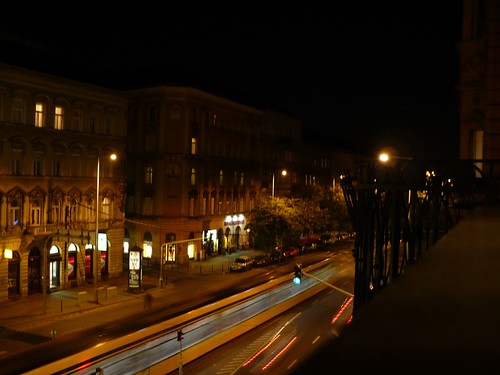
You'll notice in the map below that the subway system operates in the traditional spoke system but if you look closer at the Pest side of the city (That's East since Buda and Pest were initially different cities) there are yellow tram rings that connect the subway stations. The 1,4,6 and 47,49 routes make crosstown connections easy. We stayed on the 4,6 lines and took them to connect with the Metro on many occasions and were always completely packed into the cars, especially in the evenings and even at 9pm at night when students and young folks were out at night.
The benefit of these rings is that with their one minute headways combined with the subway's 3 minute headways, you can get anywhere in the city faster than in a car.

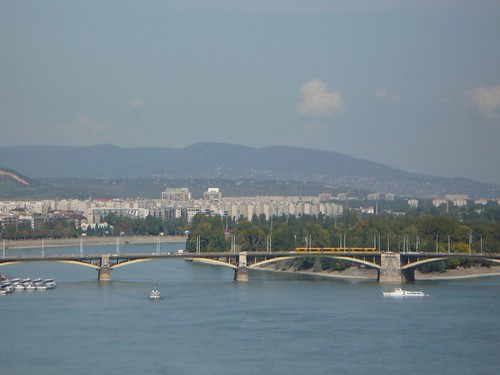
The benefits of these ring routes are many. They are fast ways to get between metro stations as well as distribute people to the places in between. You'll also notice that they connect to the suburban railways as well (in green). There are also two routes that go north and south on the river connecting the top and bottom of the ring. This is where I saw the most tourists.
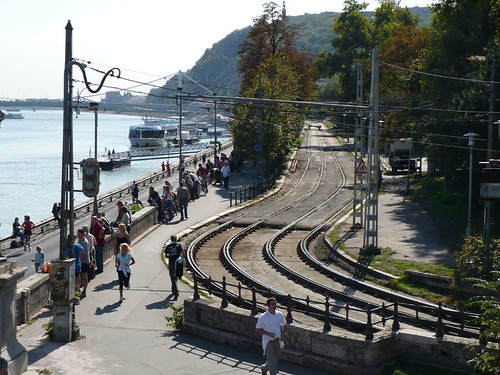
The trams were also designed not for commutes but urban transportation. The interiors were chair sparse and able to fit many more people for short trips.
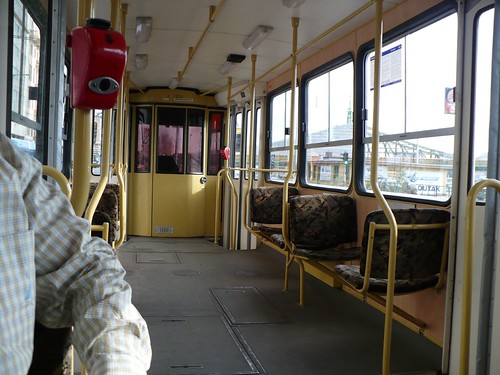
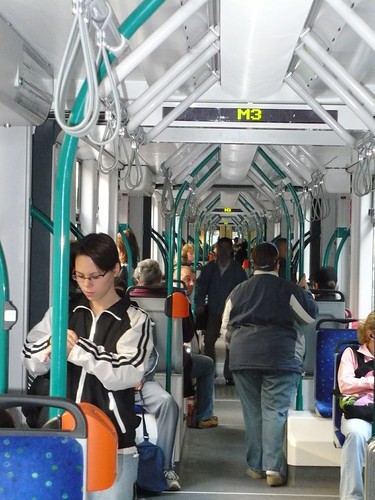
Next i'll talk about Vienna's Ringstrasse and the above and underground tram transfers in the Strassenbahn.

Budapest and the Caterpillars
In Budapest, the ring routes do some heavy crosstown lifting, specifically, the 4 and 6 routes which run on one minute headways and carry 10,000 riders per hour per direction during rush hours (I think there might be more). It seemed at times that the Combino Supras had many more people riding them than the subways with multi-car consists.

You'll notice in the map below that the subway system operates in the traditional spoke system but if you look closer at the Pest side of the city (That's East since Buda and Pest were initially different cities) there are yellow tram rings that connect the subway stations. The 1,4,6 and 47,49 routes make crosstown connections easy. We stayed on the 4,6 lines and took them to connect with the Metro on many occasions and were always completely packed into the cars, especially in the evenings and even at 9pm at night when students and young folks were out at night.
The benefit of these rings is that with their one minute headways combined with the subway's 3 minute headways, you can get anywhere in the city faster than in a car.


The benefits of these ring routes are many. They are fast ways to get between metro stations as well as distribute people to the places in between. You'll also notice that they connect to the suburban railways as well (in green). There are also two routes that go north and south on the river connecting the top and bottom of the ring. This is where I saw the most tourists.

The trams were also designed not for commutes but urban transportation. The interiors were chair sparse and able to fit many more people for short trips.


Next i'll talk about Vienna's Ringstrasse and the above and underground tram transfers in the Strassenbahn.

Labels:
Budapest,
Eastern Europe,
Metro,
Tram
Saturday, October 6, 2007
Trains, Planes, and Funiculars
All of my travel with the exception of my cab ride to the airport at 4:30 am on the last day was done by walking, intercity train, riverboat or public transit. I've got about 7 different transit cards and photos from the different systems. Here are some of the transit modes. I apologize for the lighting but I didn't really have a choice in that matter :)
Vienna Metro
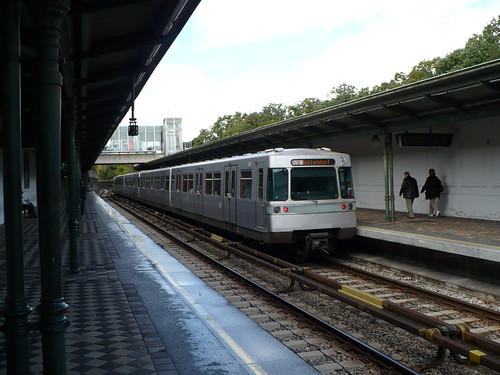
Vienna Tram
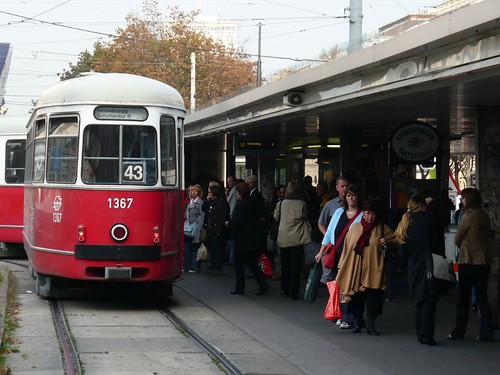
Vienna Modern Tram

Budapest Metro
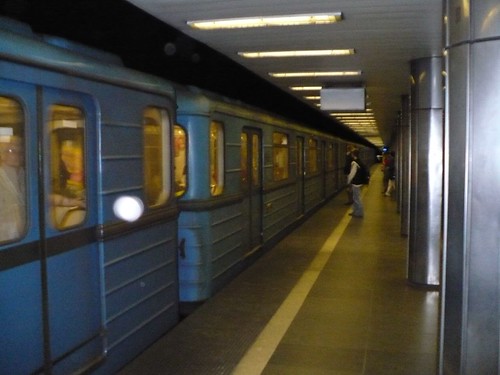
Budapest Metro M1

Budapest Tram
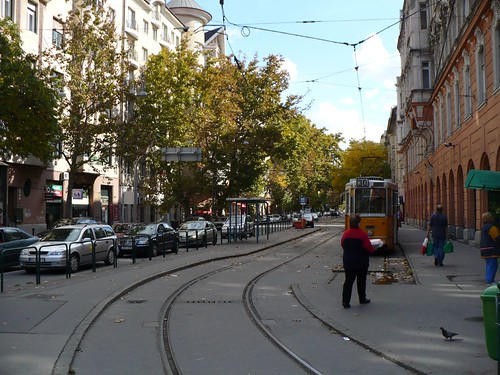
Budapest Tram
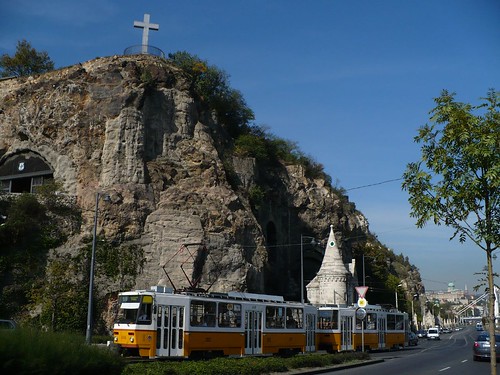
Budapest Combino Supra
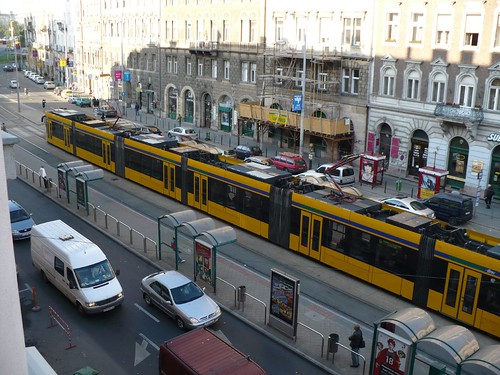
Budapest Funicular - Second Oldest in Europe

Budapest Bus

Budapest Trolleybus
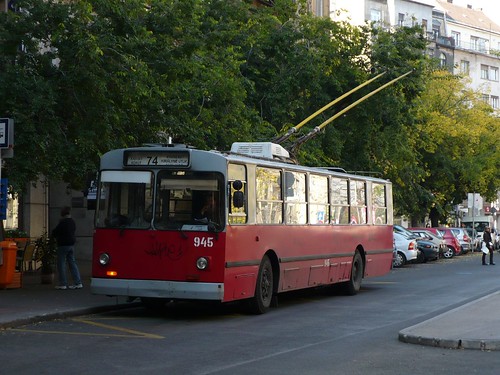
Prague Metro
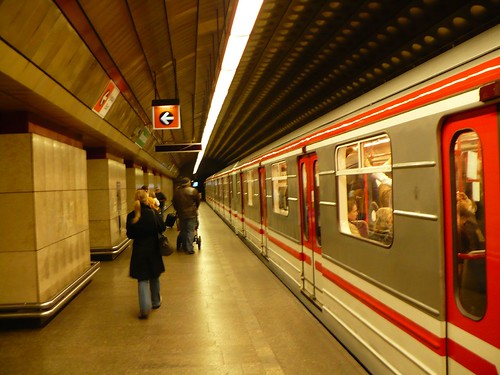
Prague Tram

Vienna Metro

Vienna Tram

Vienna Modern Tram

Budapest Metro

Budapest Metro M1

Budapest Tram

Budapest Tram

Budapest Combino Supra

Budapest Funicular - Second Oldest in Europe

Budapest Bus

Budapest Trolleybus

Prague Metro

Prague Tram

Labels:
Budapest,
Light Rail,
Prague,
Streetcar,
Vienna
Friday, October 5, 2007
Collapse & Civilizations
I don't even know where to begin to talk about my trip. First there are the ring systems of Vienna and Budapest that I want to write about, I've got about 200 pictures to share and as I hopped on BART today to get home from the SF Airport I was more than just a little bit disappointed about transit efforts in the United States. As I get my bearings and overcome some jet lag I'll try to write up some of my experiences. Sitting at a bar with an Austrian named Mike, almost dieing on the faster than American laws would allow escalators on the Budapest Metro, and the legacy of eastern bloc communism in Budapest and Prague.
I would however like to share something I wrote up on the plane ride over to Vienna...
I’m sitting here on a KLM flight to Amsterdam then to Vienna Austria for vacation with my family in Eastern Europe. The seat to my left is empty and the movie Oceans 13 just finished but I noticed something so true. Earlier there was a man sitting next to me from Visalia. It’s a small town in Central California where agriculture is the lifeblood of the community. Earlier I overheard him talking to the man on his left from Stockton, which is quickly becoming a bedroom community for the Bay Area. He asked what he did for a living and the man replied “I’m a developer”.
Now I’m not usually one to listen in but of course being an urban planner I had to hear what was coming next. The man from Visalia was uncomfortable in his seat being about 6’4” or so. Of course these planes are more like cattle cars than luxurious transportation but his knees were sitting in the cracks of the seats in front of us and his elbow was in my ribs. But he continued cheerily talking asking the developer, if there was any more room to build in Stockton because of the disappearance of farmland. The man from Visalia asked, “Why don’t you build up instead of out?” The developer replied, “There is plenty of land left to build on.” Under my breath I said “Yeah right” realizing what kind of developer he was.
The man from Visalia kept going on about resources and conservation and even ended up discussing taking vegetable oil from fast food restaurants for reuse. He then moved on to me asking what I did. I said “I’m an urban planner.” He seemed surprised. “That guy next to me is a developer.” I nodded and said “Yes I heard.” He asked what I did specifically and I told him. He then went on to discuss his former job as a parole officer and the travesty of the red car. “The Mayor was a crook” he said. “Ripping out all those streetcars.” People I talk to always seem launch into the benefits of transit without provocation. I never prodded him or even told him about my thoughts on the subject but he told me about it anyways. He was around for the red car and seemed specifically upset about their demise. “You’d never be able to build it back today” he said. I told him they were trying.
Throughout the flight he kept getting hit in the knees by the lady in front of us who tried to lean her seat back. He had to protest each time which led him to ask to move seats. The flight attendant was more than happy to help him out so he was out of there leaving me and the developer an empty seat between us. As we both put our stuff on the tray table where the man from Visalia was sitting I noticed the book he put down juxtaposed with the one that I put down. His was a hardcover deep crimson red book titled “Empire”. Mine was a softcover book by Jared Diamond called Collapse about the collapse of several civilizations throughout history by climate change among a number of other factors including war and societal suicide (ie: Easter Island). It really stuck in my head the difference between the two sets of warring factions in the sprawl fight. The ones who think there are endless spoils to be had and a never ending supply of resources, and those who are looking to avoid a collapse. I’ve never seen the fight in such black/white or good/evil terms and probably will never again because of course it is never so simple. I’m not a hardcore environmentalist or anything but for a moment there I realized why I do what I do.
I would however like to share something I wrote up on the plane ride over to Vienna...
I’m sitting here on a KLM flight to Amsterdam then to Vienna Austria for vacation with my family in Eastern Europe. The seat to my left is empty and the movie Oceans 13 just finished but I noticed something so true. Earlier there was a man sitting next to me from Visalia. It’s a small town in Central California where agriculture is the lifeblood of the community. Earlier I overheard him talking to the man on his left from Stockton, which is quickly becoming a bedroom community for the Bay Area. He asked what he did for a living and the man replied “I’m a developer”.
Now I’m not usually one to listen in but of course being an urban planner I had to hear what was coming next. The man from Visalia was uncomfortable in his seat being about 6’4” or so. Of course these planes are more like cattle cars than luxurious transportation but his knees were sitting in the cracks of the seats in front of us and his elbow was in my ribs. But he continued cheerily talking asking the developer, if there was any more room to build in Stockton because of the disappearance of farmland. The man from Visalia asked, “Why don’t you build up instead of out?” The developer replied, “There is plenty of land left to build on.” Under my breath I said “Yeah right” realizing what kind of developer he was.
The man from Visalia kept going on about resources and conservation and even ended up discussing taking vegetable oil from fast food restaurants for reuse. He then moved on to me asking what I did. I said “I’m an urban planner.” He seemed surprised. “That guy next to me is a developer.” I nodded and said “Yes I heard.” He asked what I did specifically and I told him. He then went on to discuss his former job as a parole officer and the travesty of the red car. “The Mayor was a crook” he said. “Ripping out all those streetcars.” People I talk to always seem launch into the benefits of transit without provocation. I never prodded him or even told him about my thoughts on the subject but he told me about it anyways. He was around for the red car and seemed specifically upset about their demise. “You’d never be able to build it back today” he said. I told him they were trying.
Throughout the flight he kept getting hit in the knees by the lady in front of us who tried to lean her seat back. He had to protest each time which led him to ask to move seats. The flight attendant was more than happy to help him out so he was out of there leaving me and the developer an empty seat between us. As we both put our stuff on the tray table where the man from Visalia was sitting I noticed the book he put down juxtaposed with the one that I put down. His was a hardcover deep crimson red book titled “Empire”. Mine was a softcover book by Jared Diamond called Collapse about the collapse of several civilizations throughout history by climate change among a number of other factors including war and societal suicide (ie: Easter Island). It really stuck in my head the difference between the two sets of warring factions in the sprawl fight. The ones who think there are endless spoils to be had and a never ending supply of resources, and those who are looking to avoid a collapse. I’ve never seen the fight in such black/white or good/evil terms and probably will never again because of course it is never so simple. I’m not a hardcore environmentalist or anything but for a moment there I realized why I do what I do.
Monday, October 1, 2007
Photos From Half Way

Here are some photos from my trip to Eastern Europe. I'll describe more when I have time. I've taken about 200 photos so far so i'll get them up eventually.
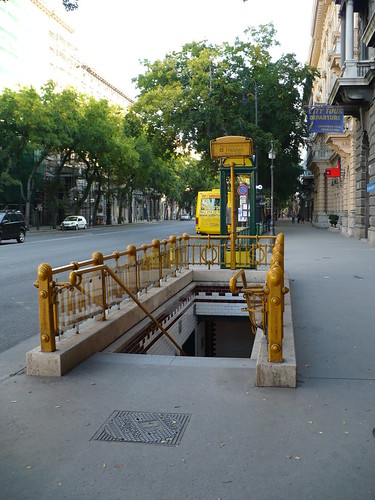
Entrance to the oldest subway in mainland Europe.
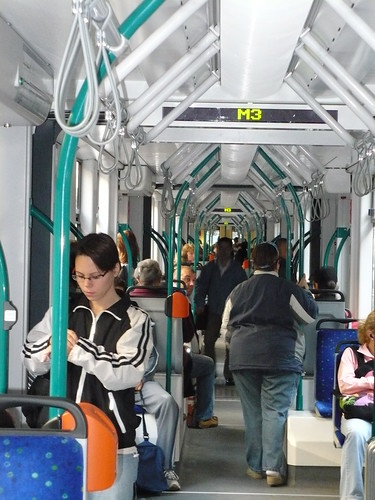
The interior of the Combino Supra streetcar. Always packed.
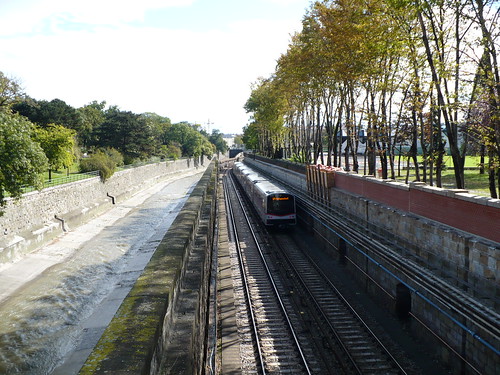
The Vienna Metro. Comes every 5 minutes no matter what time of day. Even on Saturday and Sundays!!!
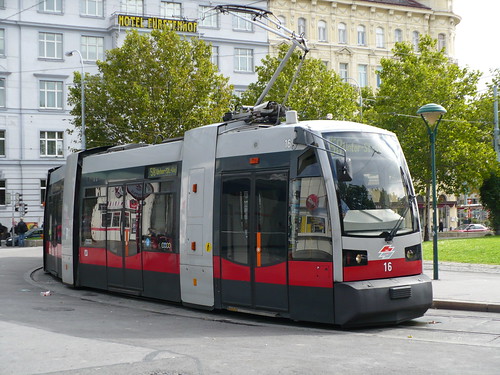
A newer Vienna Tram. Very Cool.
Still going to be slow on the posting. I'll try.
Subscribe to:
Posts (Atom)
